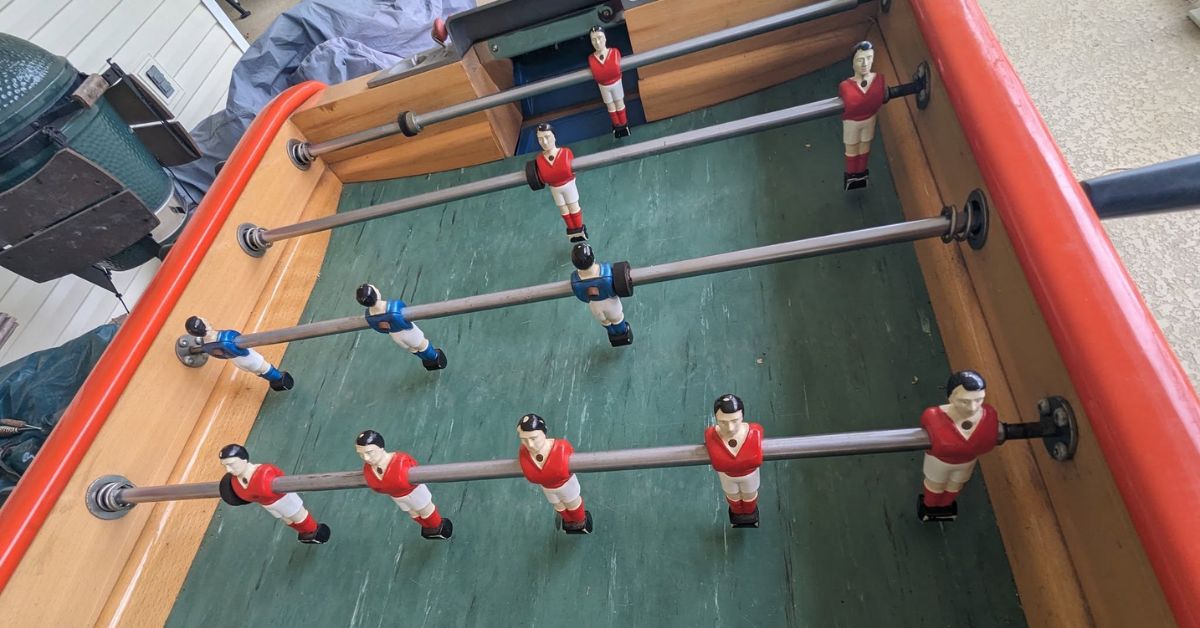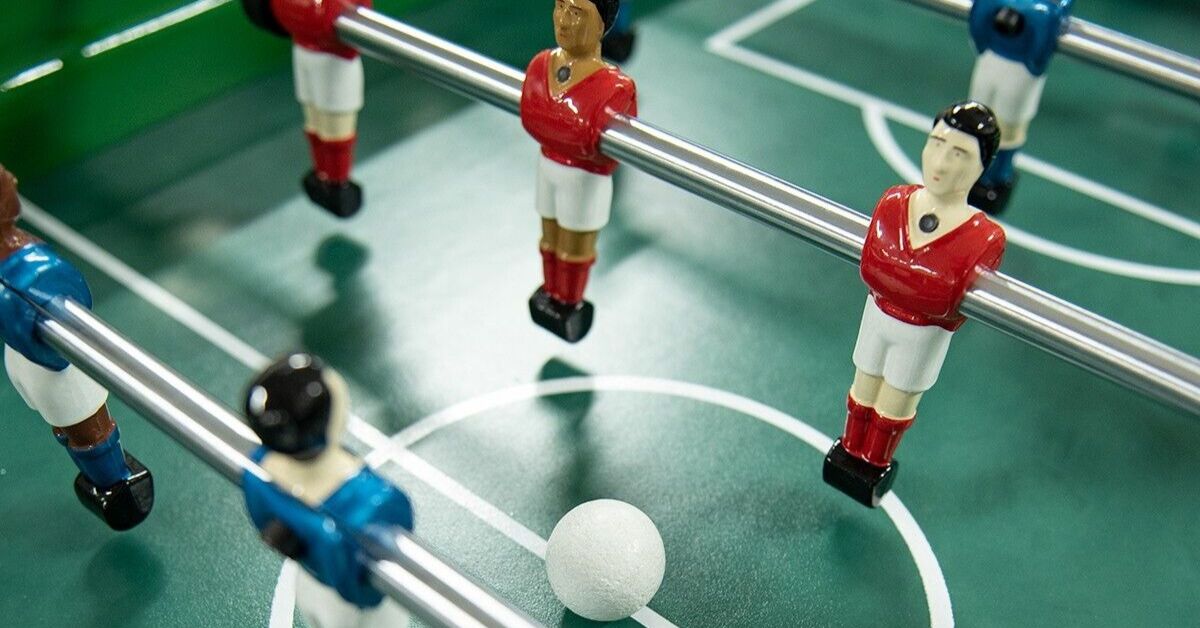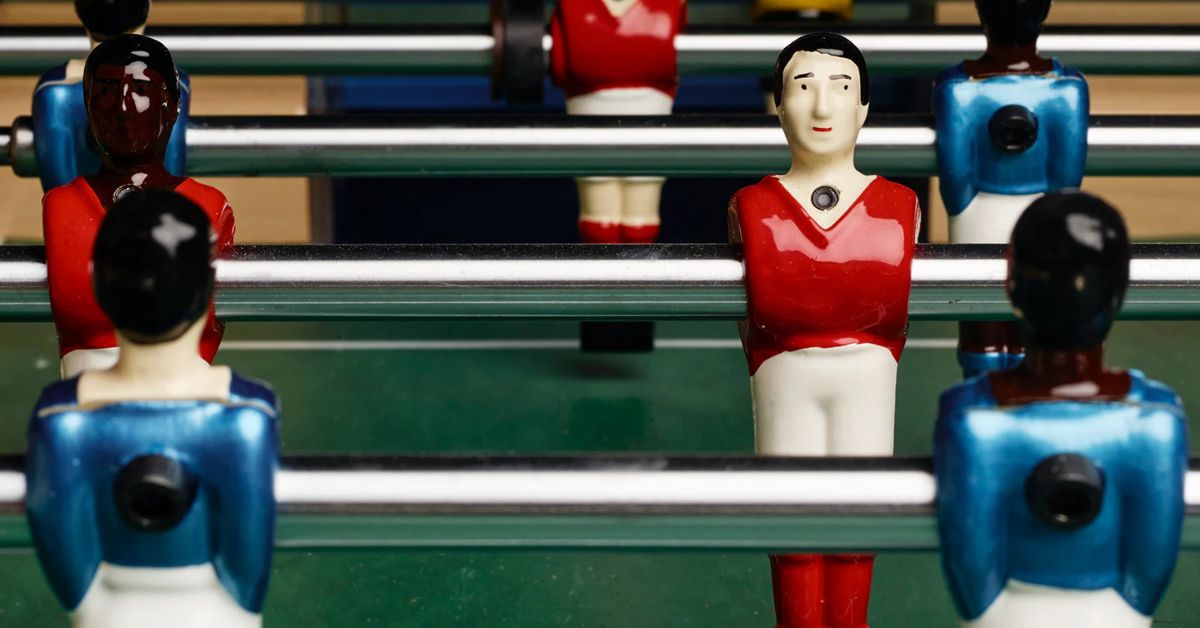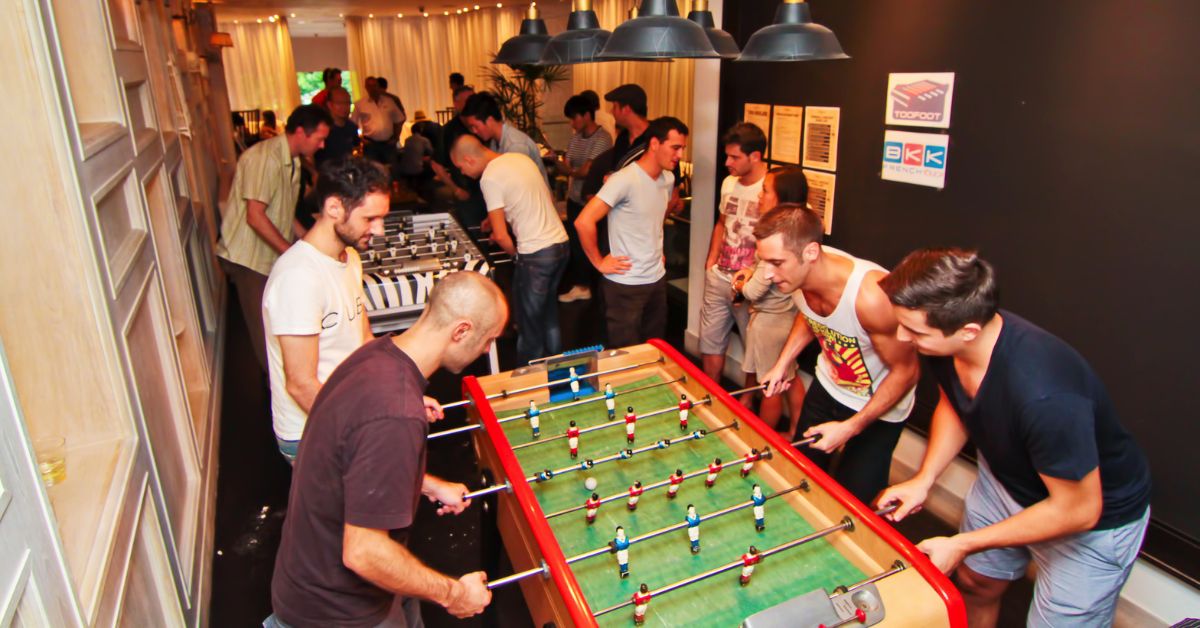Whether in someone’s home game room, in a sports bar, or at an arcade, foosball tables can be a common sight when out and about and looking to have fun. But you don’t always have to go out for a game of foosball—you can have it right in your own home!
Foosball is great for both casual play and competitive, but there are a few things to consider before deciding to purchase a table of your own. Because of these considerations, it’s essential to have a guide to buying a foosball table when making your selection. Know what you’re getting into, the differences, and why they matter.
Going Over the Basics
Before diving into the specifics of what to look for in a foosball table, we’ll go over a few of the more basic considerations to look into.
The Dimensions of Your Table
Generally speaking, a foosball table will be about 56 inches long, 36 inches tall, and 30 inches wide. There may be some slight variation between models, such as more compact tables for smaller spaces, but these are the default dimensions to expect.
Knowing how large these tables are will help you determine where you’ll put them, whether in your home or your place of business. Make sure you not only have the room to fit the table but also the room to fit at least two more people to play.

Test Your Rods
Foosball tables typically use steel rods. These are the rods that control the players on the field. When looking into tables, make sure these rods have quality construction, as they’re the focal point of every game you’ll play.
Ensure that the rods you have can take the abuse common to a game of foosball. From pushing and pulling to rough spinning, your rods need to keep up with the fast pace of the game.
Bonzini tables utilize telescopic rods in their design, which narrows the profile of the table itself; the rods retract into the table, eliminating the hazard of rods jutting out. Rods that stick out can pose a particular danger to children, as kids may run around the table, unaware of rod handles sticking out. Telescopic rods also make for easier storage, which is ideal if you’re running low on space.
Check Leg Stability
There is no getting around the fact that playing foosball means jostling the table a little—it comes with pushing and pulling the player rods. That’s why it’s essential to make sure the legs and general construction of your table can handle the pressure.
Check the material to ensure it can stand up to the intended purpose of your table. Solid wood and stainless steel are great for standard tables, while plastic is better for the more casual foosball setups.
For greater stability, Bonzini ITSF Tournament tables also use steel crossbeams on their legs, which reinforces the balance. These crossbeams go a long way to increasing the overall safety of your table during an especially heated game.
Number of Goalies
Each side needs a goalie, but it’s not always just a single goalie to protect your goal. Foosball tables typically come with either one goalie or three, and the difference can change how you play the game.
Having a single goalie makes it harder to defend the goal, but that means you’ll need to be especially skilled to prevent the other team from scoring. Three goalies obviously make the goal easier to defend, which makes this table version best for beginners who just want to have a fun match.
Different Types of Foosball Tables
There are several types of tables that exist, each one providing its own benefits and suiting certain situations.
Standard Table
A standard foosball table is what you’d typically see in any sports bar; it has four legs, stands upright, and is its own single piece. Standard tables utilize wood in their construction, making for sturdy, reliable tables that can last years.
Tabletop
These tables are very similar to the standard ones, but they do not have their own legs for support. Instead, you can place them on the floor or on a table to play, hence the name. These types of foosball tables are great for kids and casual play, but they feature less sturdy materials.
Combination Table
Combination tables are not just foosball tables—they can also be air hockey tables, checkers boards, chess boards, and so on. They’re not limited to any one game and come with a variety to ensure you have options. Combination boards will usually use particle board to simulate that wood feeling.

Different Styles of Foosball
In the world of foosball tables, there are several styles, and each can have its own look, rules, and history. We’ll go over a few of the most common foosball styles.
American
American foosball tables typically use a plastic laminated field and have 13 plastic players to a side. You’ll find that players on American boards will have wider feet than what you’d see on other tables, which makes it easier to connect with the ball. These tables can also have rubber bumpers around the field, which ensure the ball quickly rebounds and remains in play.
American tables are probably the most common option you’ll find in the US, as they’re good for general play, but they can lack the nuance other styles offer.
French
French tables, such as Bonzini foosball tables, utilize aluminum figures, a cork ball, and a Gerflex field. Bonzini tables are typically smaller than American tables, which makes them great for both larger and smaller spaces.
As we’ve mentioned before, Bonzini tables use telescopic rods, which can make it easier to fit your table in existing spaces. On top of the space the telescopic rods can save, they’re also safer for households with children; the odds of kids running into a telescopic rod are much smaller.
These tables also have sloped edges, which enables the ball to roll back into play instead of slowing down at the outer edge of the field. Bonzini tables have a rich history, and their construction reflects that story with solid wood that guarantees decades of use.
And lastly, the iconic, rounded style of Bonzini tables is unique to them, as American and Italian tables typically use a more rectangular design.
Italian
Lastly, we have Italian foosball tables, which commonly have smaller figures, a glass table, and lighter rods. These features facilitate a much faster-paced game than other tables; other table styles can be slower and more calculated, while Italian tables facilitate breakneck speeds.
Italian foosball tables can use solid wood, stainless steel, and tempered glass to keep in line with the more modern feeling of play. These reinforced materials ensure that it can keep up with the ferocity of play, making sure that it doesn’t fall apart in the middle of a heated match.
Get the Table That Fits Your Style
Whether you want the iconic style of a French table, the sleekness of an Italian one, or the convenience of a combination table, go in knowing what each foosball table offers. Equipped with our guide to buying a foosball table, you’ll have no trouble finding the right configuration for you, your friends, and your family.










